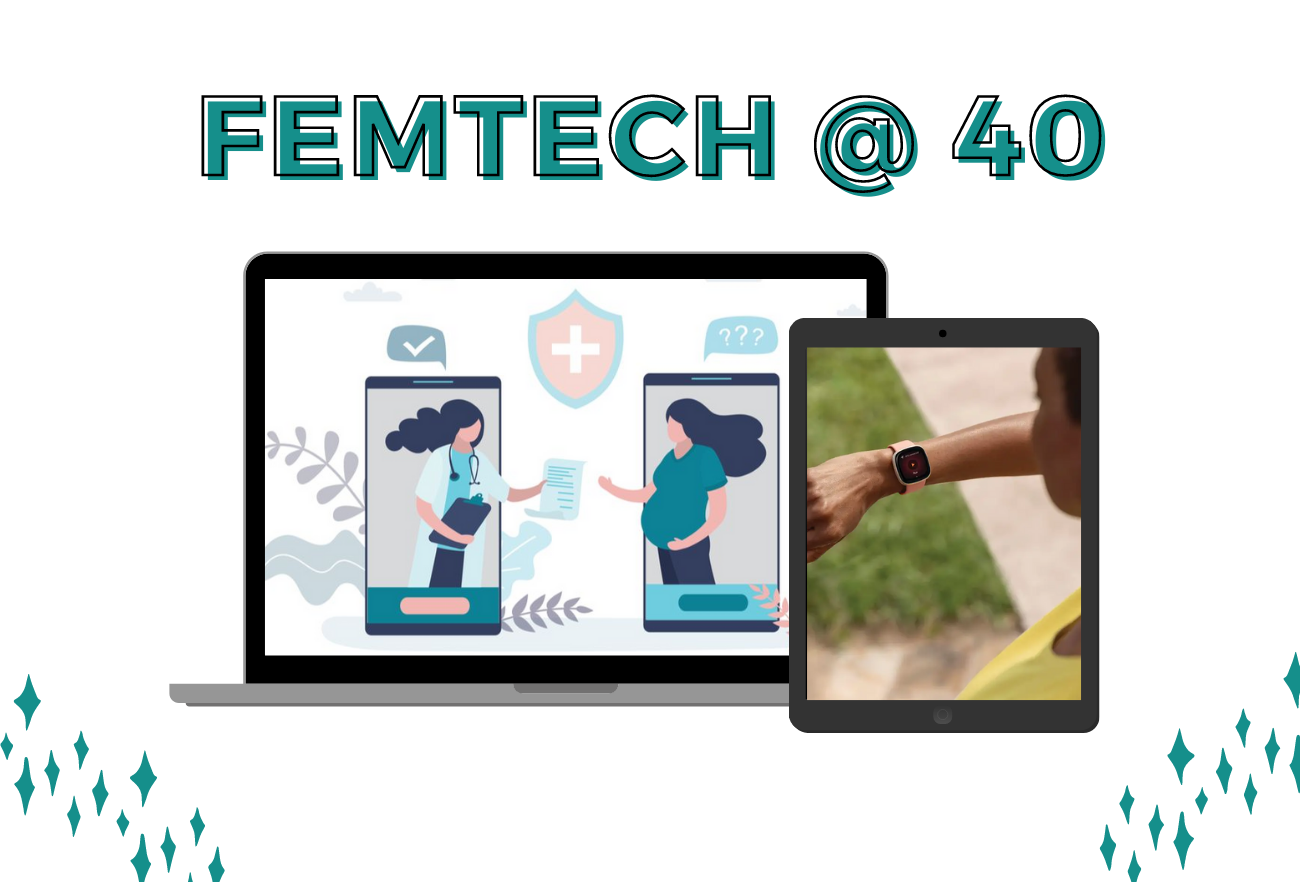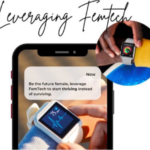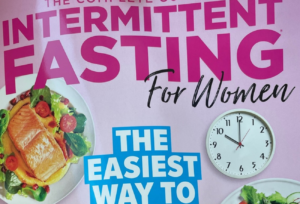
If you’ve just hit 40, welcome to the club!
40 marks a new decade of life (and yes, you should absolutely celebrate it!). During this time, many women continue to juggle their careers and family. Yet, at the same time, various women in their 40s have children that have reached self-sufficient ages. Usually, this means you have more time to focus on you (and sometimes, not.). Either way, reading this article is a great start to learn how to navigate your health through your 40s.
During this phase of life, many women begin to experience perimenopausal symptoms, including hot flashes, night sweats, sleeping difficulties, menstrual irregularities, brain fog, and more. But in the modern day, there are so many options to not only combat these symptoms but also improve your overall health.
Technology has thrown the door wide open when it comes to understanding what’s going on beneath the surface and making informed decisions about your health and your life. Continuing on from the 30s, this is Part 2 in my FemTech series. So, as a 40-something year old, how can you use technology to optimize your health? What is the best way you can leverage all of this technology to become the best version of you?
The Top 3 FemTech Pieces You Should Consider
1. Devices and Apps for Navigating Menopause & Vaginal Dryness
Joylux has taken the FemTech world by storm. This device has been created to help women navigate through and treat vaginal dryness associated with perimenopause and menopause. This confusing time of life is sometimes referred to as a “second puberty.” In fact, various studies have compared puberty and menopause (1). After all, puberty ignites that start of a woman’s reproductive years and menopause marks the end of this phase of life.
At the same time, researchers note that there isn’t any particular relationship outside of this between puberty and menopause. Yet, many scientists have explored the common outcomes of these years, such as the prevalence of autoimmune conditions, mental health disorders, and cardiometabolic risk (1).
So, what else do these phases of life have in common? Well, hormonal fluctuations are a great place to start. As teenagers, women are often marked as moody, and the same can be said of many women going through menopause. For moodiness and similar symptoms, you can blame your hormones. At the same time, some of it isn’t as simple as it sounds.
Research has noted that about 62% of women that have gone through or are going through menopause experience vaginal dryness (2). While hormonally-related, vaginal dryness is also associated with decreased vaginal blood flow, mucosal thinning, inflammation, and microbiome changes (3).
Experiencing vaginal dryness can greatly impact your libido, your sexual activity, and ultimately, your relationship with your significant other.
However, Joylux has a viable solution for this. Joylux’s vFit technology hydrates, increases blood flow, and increases confidence when it comes to “down there.” This device uses red light technology to stimulate the vaginal tissue via only 10-12 minutes of use per day. Many women claim they’ve noticed improvements in three weeks or less. Another quick note here: It’s completely hormonal-free! In many ways, it’s a very natural and non-invasive method to counteract vaginal dryness that frequently occurs during this time.
Another common symptom many women experience during their 40s is hot flashes. And you can probably guess that there is a FemTech device for this as well! Grace is a sensor-bracelet that detects hot flashes. Upon detection, the bracelet then delivers a cooling sensation to a woman’s wrist. It can even be worn while you sleep, combating the dreaded night sweats!
2. Activity Trackers for Exercise – But Not Too Much
For many women after the age of 30, they begin to notice body composition changes. During the 30s and 40s, it takes the right approach to maintain muscle mass while not adding piles of stress on the body. In fact, during these years, it all comes down to doing the right type of exercise while not overdoing it.
Activity trackers can help you understand whether you’re doing this or not. Like trends and KPIs (Key Performance Indicators) in business, you need to uphold similar standards for your health and longevity. Think of your next tracker as a way to level up the way you think and use it to allow you to take on an even more BOLD strategy when it comes to your health and wellness.
At the same time, keep in mind that gentle movement and strength training are great when done in the right dosage and frequency. On the other hand, excessive exercise can actually lead to further hormonal imbalances in women due to the stress it can place on the body.
With excessive exercise, high levels of cortisol occur within the body, leading to imbalances involving your sex hormones. Thus, tracking heart rate, steps, and more can help you understand how much exercise you’re getting versus how you’re feeling and everything else that’s going on. Similar to the 30s, these trackers can help you find a good balance suited for you and your needs:
3. Menstrual Trackers & Moving Away From Birth Control
Tracking your menstrual cycle during this phase of life can help you determine when perimenopause begins. It allows you to have clear data on any irregularities or symptoms that you begin to experience at certain times of the month.
During the 40s, many women also begin to move away from birth control options. At this stage, it’s important to remember that birth control created an orchestrated environment within the body. Thus, you might see various irregularities and symptoms when coming off of birth control as the body attempts to adjust. Sometimes, this can be mistaken for perimenopause. Just something to note here!
At the same time, you might feel as though you’re breaking up with your period as it starts to come at less frequent and predictable times. This can lead to serious disconnection between the self and your body. Thus, in your 40s, you’ll want to focus on reconnecting with your body (movement and tracking such changes are wonderful ways to do this!).
Apps, such as Clue and Eve, are still useful throughout this decade of life. They can help you navigate any changes, as well as allow you to attend doctor’s appointments or check-ups well-equipped with all the information you need (or as much information as you can get!). At the same time, with any apps, ensure you check their privacy policies. It really comes down to the consumer or user to be a pro-advocate about how personal information is being used. Like the social media platforms that have emerged in recent decades, the world is ever-evolving. Yet, when it comes to your health and privacy, you want to ensure you’re given a safe place where your needs can be met. This might mean exploring options outside of the current traditional medical paradigm (which is exactly what I encourage my own patients and clients to do!).
4. Mindfulness Apps for Brain Fog & Stress
Are you forgetting more than usual? Are you having trouble concentrating or thinking clearly at times? This, my friend, is called brain fog, and it’s very common for women in their 40s to experience. Some research even shows that about 60% of women will experience brain fog and memory problems as they transition through menopause (4). 
Brain fog is often caused by stress, such as a lack of sleep, inflammatory diets, high stress in your personal life, and certain medical conditions. There’s some evidence that exercise can help with brain fog. However, you can also turn to mindfulness practices to help alleviate any stress in your life, which may drastically impact your brain fog dilemma.
Some great apps to try for meditation and quieting the mind include Headspace, Calm (this is the one I use as part of my daily self-care rituals), and Insight Timer. These phone apps offer easy ways to meditate anywhere and anytime. They come equipped with timers and countless guided meditations, helping you harness the power of your mind and boost your cognitive function. In fact, there is even some research showing that meditation can offset age-related cognitive decline (5). Start getting ahead of the curve now so you won’t have to worry too much about these changes later on down the line.
5. Telehealth Options for Menopause & Perimenopause
Standard healthcare often tends to overlook the issues that come along with perimenopause. And with that, telehealth options are leading the way and bridging the gap in an effort to help women at all ages.
For instance, Gennev recently released HealthFix, giving women virtual access to OBG-YNs and health coaches. CurieMD also recently launched a menopause diagnosis and prescription platform online. This means you can access the healthcare you need, all from the comfort of your own home.
In other words, if you feel you aren’t getting the support and help you need from your primary care provider, there are options! Use them. Take advantage of them. Your time is now!
Stay Ahead of the Game
When it comes down to it, FemTech can help you address any health issues before they become a bigger problem. Getting a handle on what’s going on beneath the surface and addressing discomforts or fluctuations during this decade of life is key to transition through menopause as smoothly and comfortably as possible.
And as the Future Female, you have the power to use this technology. It wasn’t until recently that research began to focus on women’s health and the differences between men and women.
If you want to dive deeper into your hormones and unlock your full potential, book a call with Dr. LaReesa today. All the areas mentioned in this blog piece are married together in her holistic approach to make your transition into midlife with ease and grace. Together, we can help you achieve optimal health where you feel good and can thrive in your day-to-day life. Visit www.drlareesa.com for more information. Stay tuned for more excitement Dr LaReesa is helping to create and contribute to this emerging and exciting femhealth space.
Wellness & Epigenetics Coach, Consultant, Physician, Health Advocate, Mentor & Author.
Note: This content is meant to be for informational purposes and not for any specific marketing and solicitation of purchase or investment in the products mentioned. Please consult your healthcare provider for your unique health situation.







